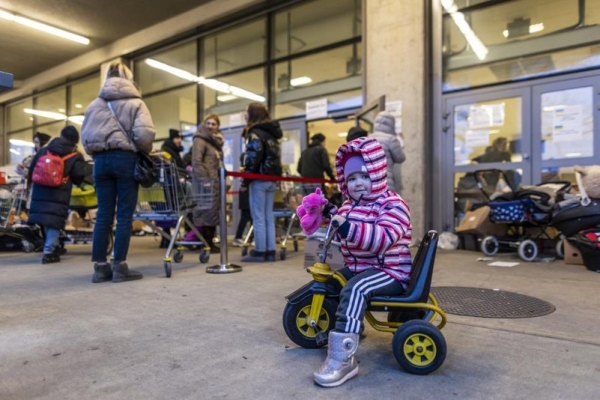Ukraine refugees want to return home — but how?
It is generally accepted that the longer refugees are out of their home country the less likely they are to return. But in Ukraine’s case things look slightly different.
Two years after being forced to flee their homes due to the Russian invasion, a significant number of the eight million displaced Ukrainians continue to express a strong determination to return.
In our new EBRD research paper, we look at surveys on the intentions of refugee Ukrainians in Europe to return or integrate. Fewer than one in ten intend to settle permanently outside Ukraine. The vast majority are planning to return either very soon (7.6 percent) or when it is safe (59.0 percent).
Starting work in their host countries, often a tipping point as refugees start planning a different life in a new place, has had no impact on their aspirations. Nor have socioeconomic considerations or age. While before the war many Ukrainians wanted to emigrate, the conflict has reinforced their sense of national identity.
That they continue to yearn for home is perhaps unsurprising given the difficult lives many are leading while away.
A survey by the International Organization for Migration suggests only a fifth of female refugees in Poland are employed, while another 30 per cent are looking for work. This is despite Poland’s widespread support for employment for refugees from Ukraine. In other host countries, employment rates are likely even lower. As a result, many are facing financial hardship.
However, just because the refugees want to return does not mean they will, any time soon.
To enable them, two things are needed. One is the sense of safety cited by many, which will depend on the evolution of the war.
The other is a resilient economy. On the economy, with the help of external financing, Ukraine has so far done an excellent job of shoring up its economy despite the war, stabilising GDP and reducing inflation from 25 percent to its target of five percent.
However, the Ukrainian economy — and with it the war time effort now as well as the longer-term recovery — is hugely dependent upon the availability of human capital in the country. So, attracting refugees to return is a key element in government planning. On the policy level, we are working with the authorities on a range of measures to promote human capital resilience.
There are several other crucial factors that will determine people’s willingness and ability to return.
One is labour market policies that ensure an efficient allocation of human capital, whether by skills mapping and planning or by enhancing job brokerage services (connecting job seekers with vacancies).
A second is the recognition of qualifications, especially from EU countries, to enable Ukrainians who have acquired skills and qualifications outside Ukraine to be able to use them in their work.
Women and children first
A third — within the broad category of providing adequate housing, security, and infrastructure — is care provision, especially of childcare, given that the majority of refugees are women and children. There is a strong case for the government to prioritise these actions.
With so many millions abroad or displaced, human capital is in short supply. The refugees, together with six million people displaced inside Ukraine after fleeing war hotspots, make up 35 per cent of Ukraine’s pre-war population of 40 million, all now living away from their homes.
Of the one-in-four Ukrainian women now living outside the country, nine out of ten were employed before they fled. As a result of the war, total employment in Ukraine dropped by 3.5 million. Of those leaving the workforce in the early days of the war, 2.7 million were women, mainly from the private sector. Losing them contributed to the 30 per cent drop in GDP that Ukraine suffered after Russia invaded in 2022 (though GDP recovered a little — by five percent — in 2023).
Returnees would bring impetus not just to boosting business but to rebuilding their lives — addressing the need to repair flats, get schools and hospitals working, get roads repaired, and all the rest of the overwhelming package of needs the country faces, both now and post-war.
Their return would bring a welcome injection of human capital to the economy, returning needed skills to the workplace and stimulating the private sector’s productivity.

